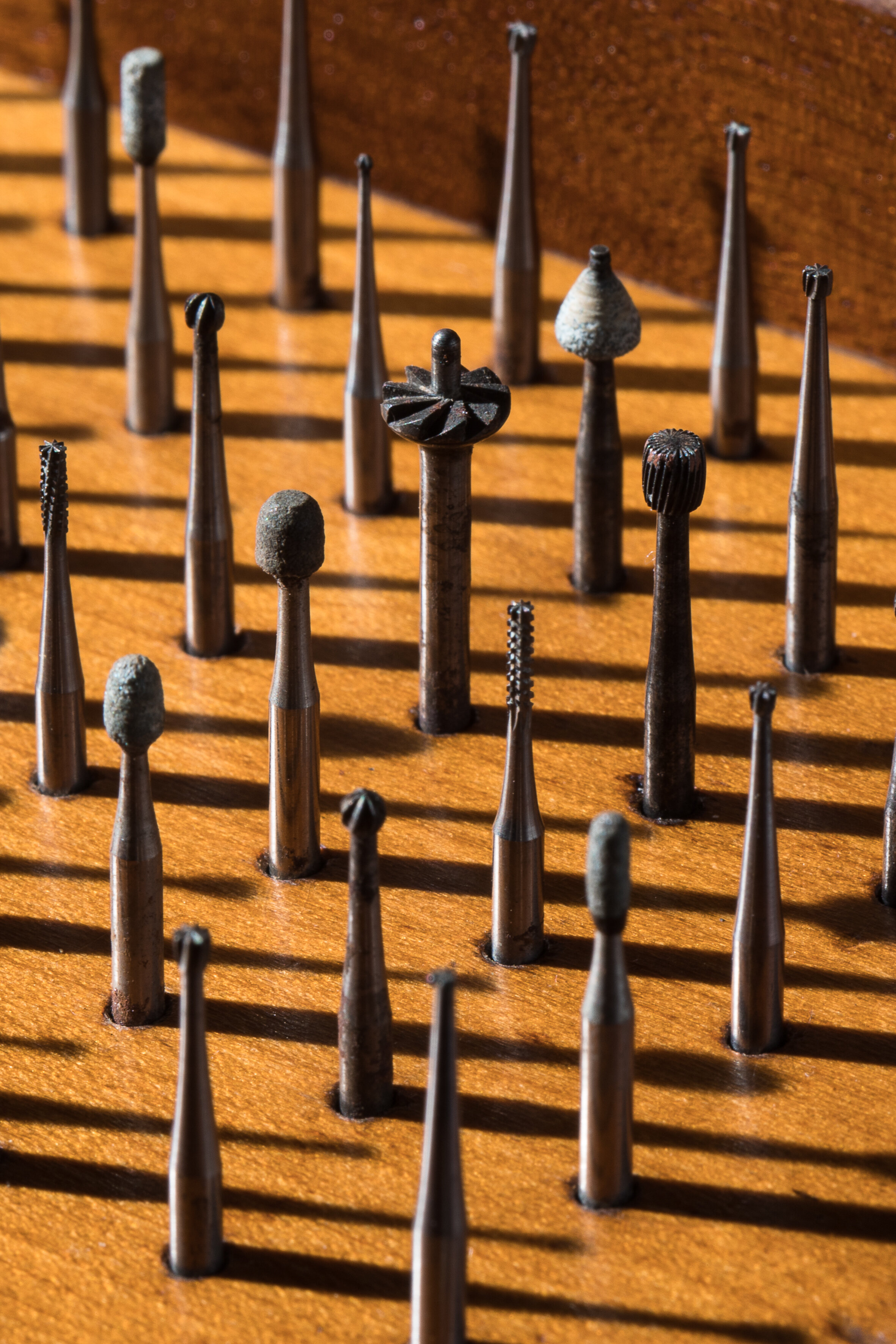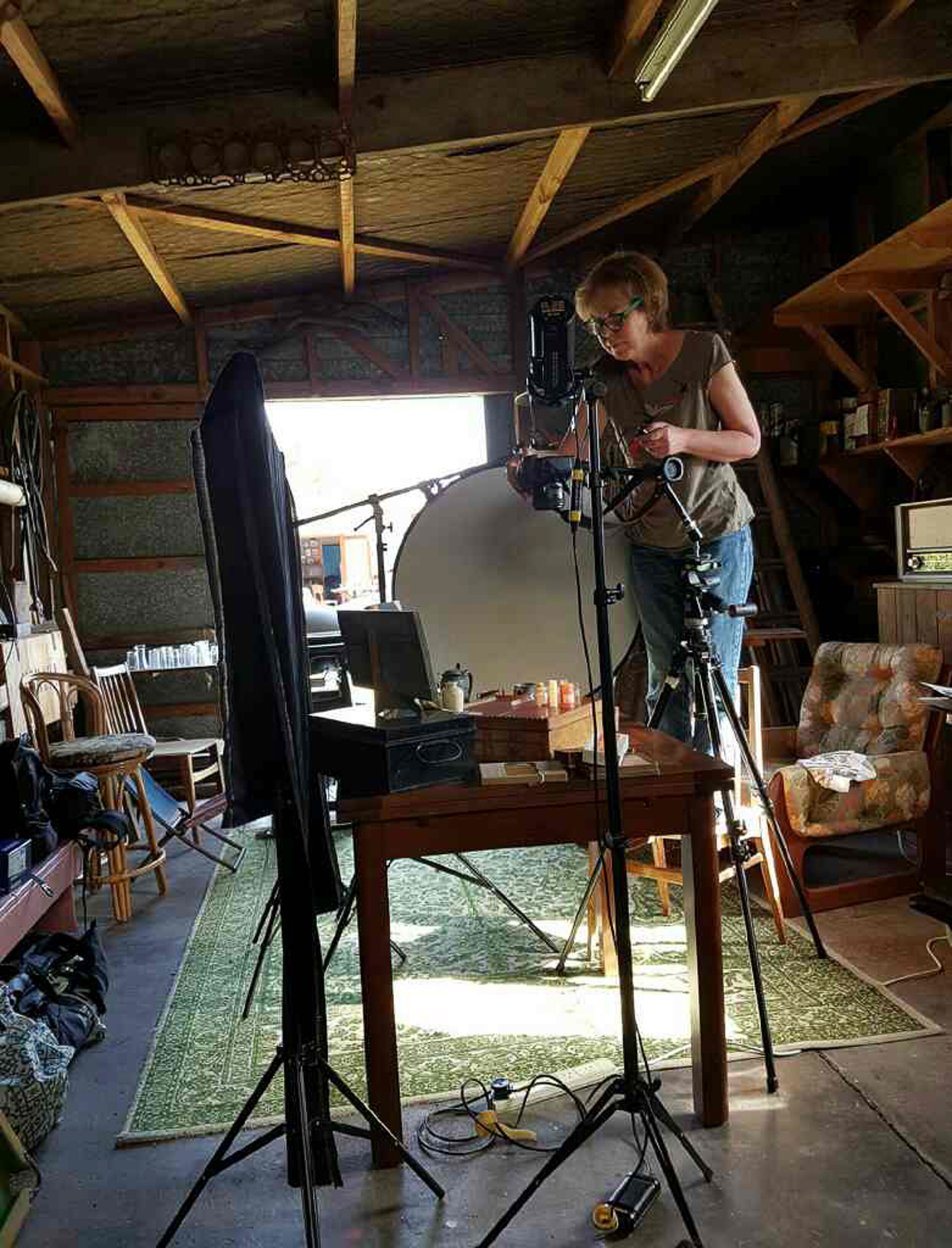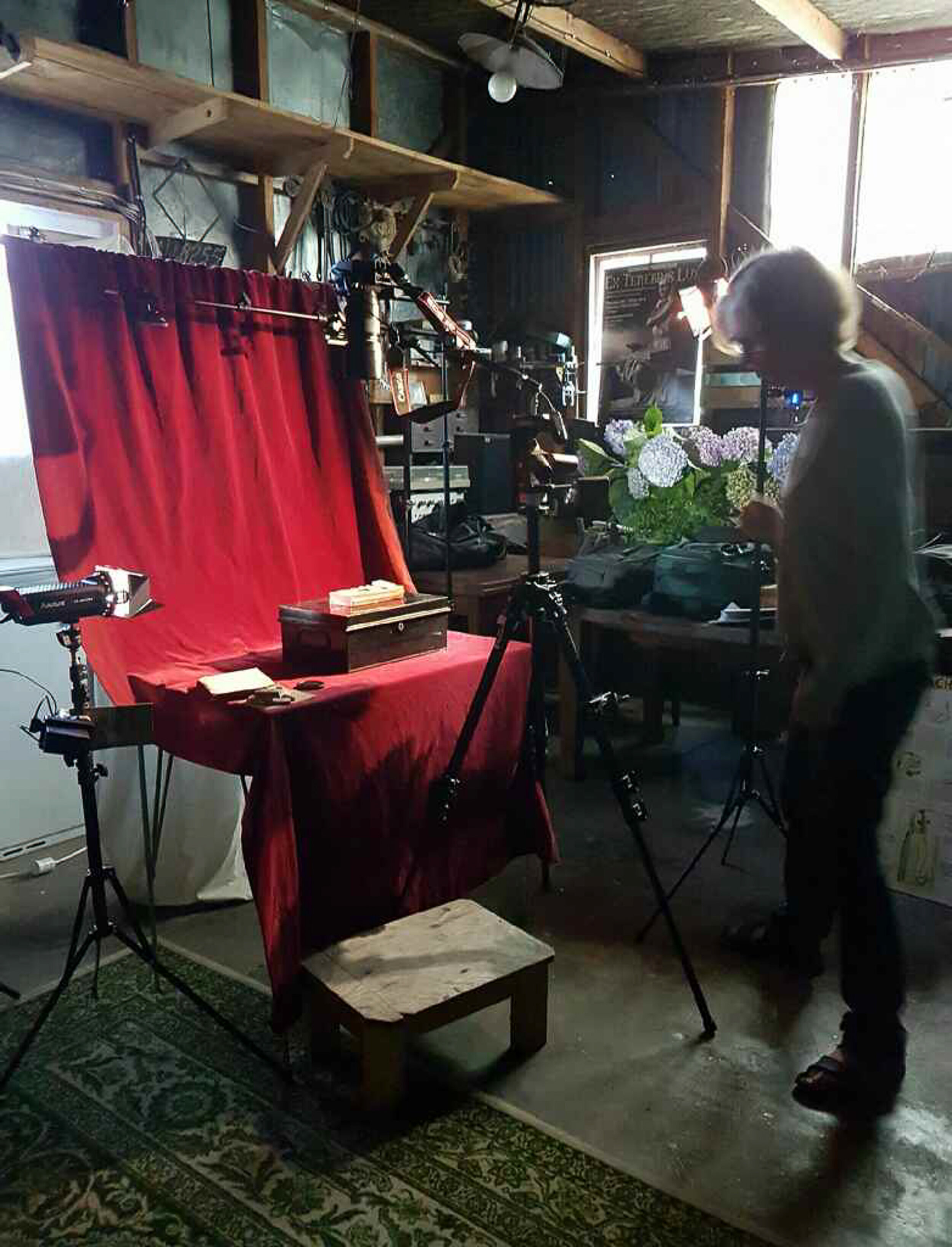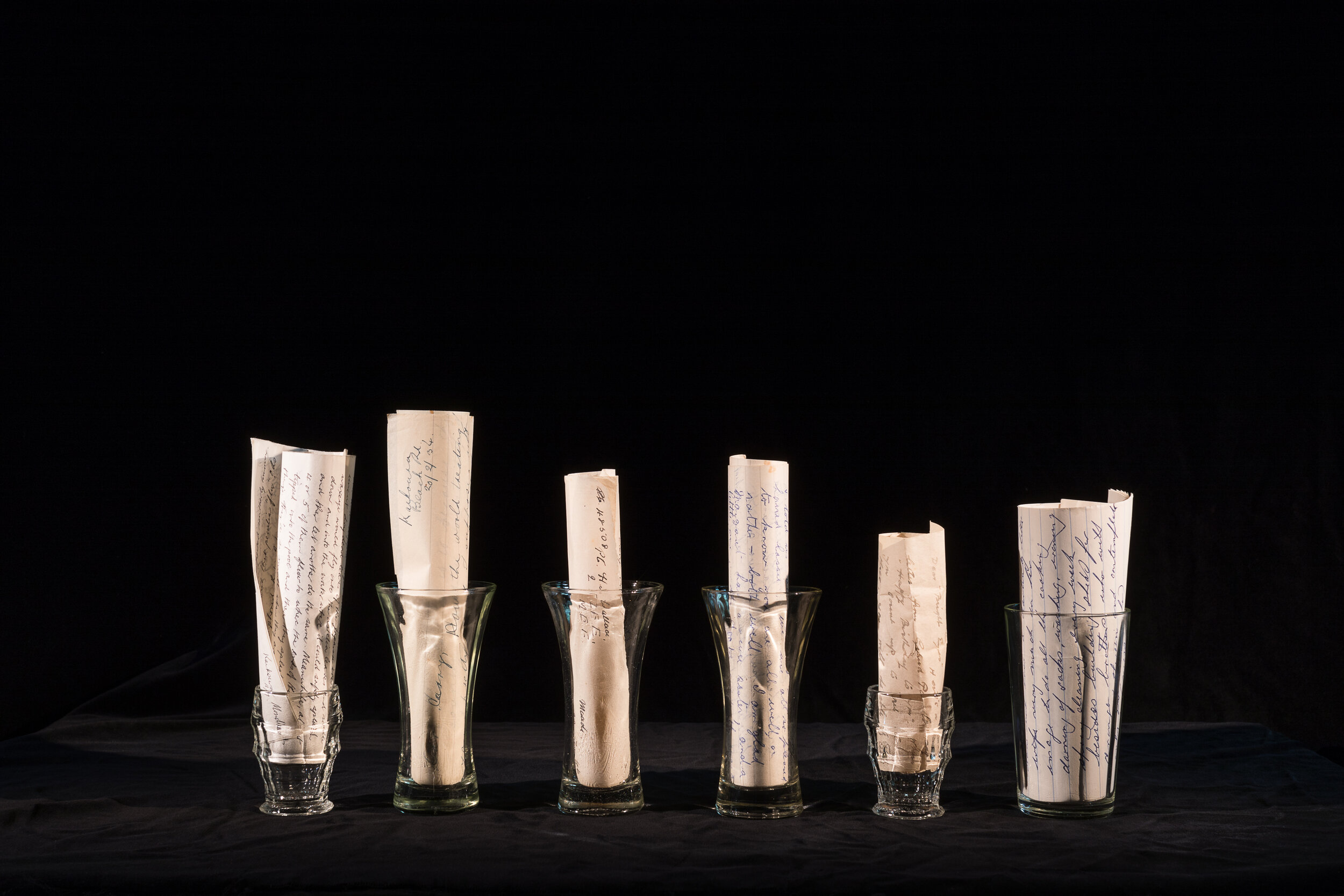Bridgit Anderson - reviewed
Stella & Cecil: A Kaikoura Composition
by Bridgit Anderson
Beach House Café, Kaikoura, 23 December – 25 January 2021
PG Gallery, Christchurch, 6 - 27 July 2021
Book: Stella & Cecil: A Kaikoura Composition by Bridgit Anderson and Margaret Egan, Steele Roberts
Reviewed by Sally Blundell for PhotoForum, 12 January 2021
Bridgit Anderson, Box of teeth
Every day they came, filing through the front door with their aching molars, decaying incisors, chipped front teeth and bleeding gums. The sitting room was their waiting room; one of the bedrooms, the dental surgery. From 1921 to 1955 the home of Cecil Wallace and his wife Stella, crouched behind a long macrocarpa hedge on what is now State Highway 1, served as the Kaikoura dentistry. Dentures were made on the bench in the kitchen; dental equipment was sterilised in a pot on the coal range; tooth decay and lost fillings were attended to in the dentist’s chair. But it was also a family home – home to the seven Wallace children; home to three bachelor uncles who set up camp in an assortment of huts, workshops and other outbuildings.
And still its legacy continues. For five generations, the acre of land, “stopped short at the creek”, writes granddaughter Margaret Egan, has been a base for family holidays, Christmas gatherings, rabbit-shooting, golf, tennis and picnics.
This rich social history is now charted in a new exhibition of still life photographs by New Zealand documentary photographer Bridgit Anderson, on display at the neighbouring Beach House Café in the seaward town.
The works are large, immersive, theatrical; an intimate documentary told through a series of luminous, staged tableaux conveying the story of a family and a profession through a selection of original objects and props.
“This project was a chance to marry art with memory,” writes Egan in the accompanying book. “Bridgit and I devised these still lifes; evocative interpretations emerging from yesterday’s objects.”
The idea for a visual record of the house was hatched in 2019 during a day’s olive-picking on the Canterbury home of Egan and her husband, QC and poet Tom Weston. Egan had taken over the Kaikoura property after the last of the bachelor uncles died in 2008. In clearing out the various sheds she discovered a trove of artefacts and memorabilia.
As she says, “I come from a family of hoarders.”
Anderson was keen. The brief was clearly more than just a record of specimens. “Margaret wanted something more interpretive.”
It also tapped into her interest in early photography and photographic practices. During her time in London, Anderson worked for conservators at the Centre for Photographic Conservation – she has a collection of over 2000 nineteenth-century glass plate negatives. The Victorians’ fixation on memorialisation was central to her landmark series Caring for the Dead, in which she recorded the journey of the body from the time of death to that of burial or cremation.
Unlike the quick click of much contemporary photography, Victorian photography, she says, was expensive – and slow. “They really thought about how they were composing and structuring things. I like that absolute slowing down – you are still working really hard but you are not taking a thousand images, you are constructing something carefully, slowly, building your way towards it. People think photography is such an instant thing and clicking the shutter is instant but making something that really speaks to people and has some substance takes a lot of time. So the whole idea of immersing myself in that world was magic for me. It enabled me to bring all that experience into the image making, especially being given stories and free rein how to interpret those stories.”
Over two intense long weekends, the historic Wallace family sheds became her studio, a place to stage the still lives and to listen to the stories of family life. “So it started becoming a lot more collaborative.”
Anderson shot the images digitally “but everything else is aligned with the later part of the nineteenth century in terms of image making and composition techniques. I do enjoy studio photography – you are taking a three-dimensional world and putting it on to a two-dimensional plane so you have to reinterpret it to get that sense of depth through layering and light. Working in the sheds was like working in an early photographic studio. I didn’t use flash, just a mix of daylight and studio lights.”
The resulting images are rich with saturated colour, carefully choreographed light, an almost cloistered sense of presentation and attentiveness. “We wanted it to be theatre,” says Anderson. “We wanted it to be a composition.”
The works bring a curious beauty to instruments more associated with the mouth-wide-open pain of the dentistry. Burs, used for cutting bone or teeth, stand in shadowed procession “both parade-ground and carnival / each in its allotted place,” writes Egan. Cold-metal extraction forceps, probes and mouth mirrors; a box of porcelain teeth (the use of real teeth, usually taken from prisoners or people killed in war, was phased out from the 1850s); small bottles of Cavitine zinc oxide cement, mercury, black copper – all are carefully arranged in muted displays of practised deliberation.
But as a social history it does not stop at the surgery door. Stella’s role in the home and clinic is told through single sprigs of flowers: love-in-a-mist, lavender, pink roses. Dolls, in dresses made by Stella on the treadle Singer sewing machine, perch on a stool used by Cecil when making dentures. Old clockwork toys, parasols, croquet mallets, timber-handled scythes, the cabinet of “good china”, crochet hooks, curling tongs, the jostle of patterns and colour on the fabrics and furnishings – all tell a gentle, reflective story of domesticity, childhood, picnics, sports, cooking and gardening.
Introduced props re-imagine the natural bounty of life in the Beach Rd property: a cut pumpkin, a basket of apples, leeks, paua, crayfish. The dramatic simplicity of this harvest, coupled with the rich black of the backcloth (lengths of black velvet, used by Anderson when doing still life photography in London) and the deep glow of polished timber, all evoke the tradition of Baroque still life paintings with their elaborate arrangements of everyday objects as seen in the works of seventeenth century Spanish painters Francisco de Zurbarán and Diego Velazquez.
Some of the introduced objects call on that tradition of symbolism: a pomegranate, a symbol of resurrection in Christian art; an extinguished candle, representing death (the bodies of two of Stella’s sons were laid in the sitting room before burial). Others evoke nostalgia for mid-century family life – the blue hydrangeas, the tin watering can, the paper dolls, the Willow Pattern china. Others are more opaque in their personal relevance: a letter to three-year-old Margaret from her grandfather, beginning “Dear Bright Eyes”; a toy rabbit recalling the resident population behind the family home.
But as a portrait of Egan’s grandparents, it also draws on the genre-defying conflation of still life and landscape pioneered by Frances Hodgkins, in particular her use of fabric to frame the view of the landscape. “It is such a wonderful juxtaposition,” says Anderson, “not unlike the staged sets used in early photography.”
As Egan writes, the house on Beach Rd is also a partner in this project. “It is the stage for the multiple acts that made up (Cecil and Stella’s) story. Bridgit and I assembled these compositions — a remembrance of ordinary lives, of happiness and sadness, each in abundance.”
Sally Blundell is a freelance journalist / writer / editor from Ōtautahi/Christchurch.
















